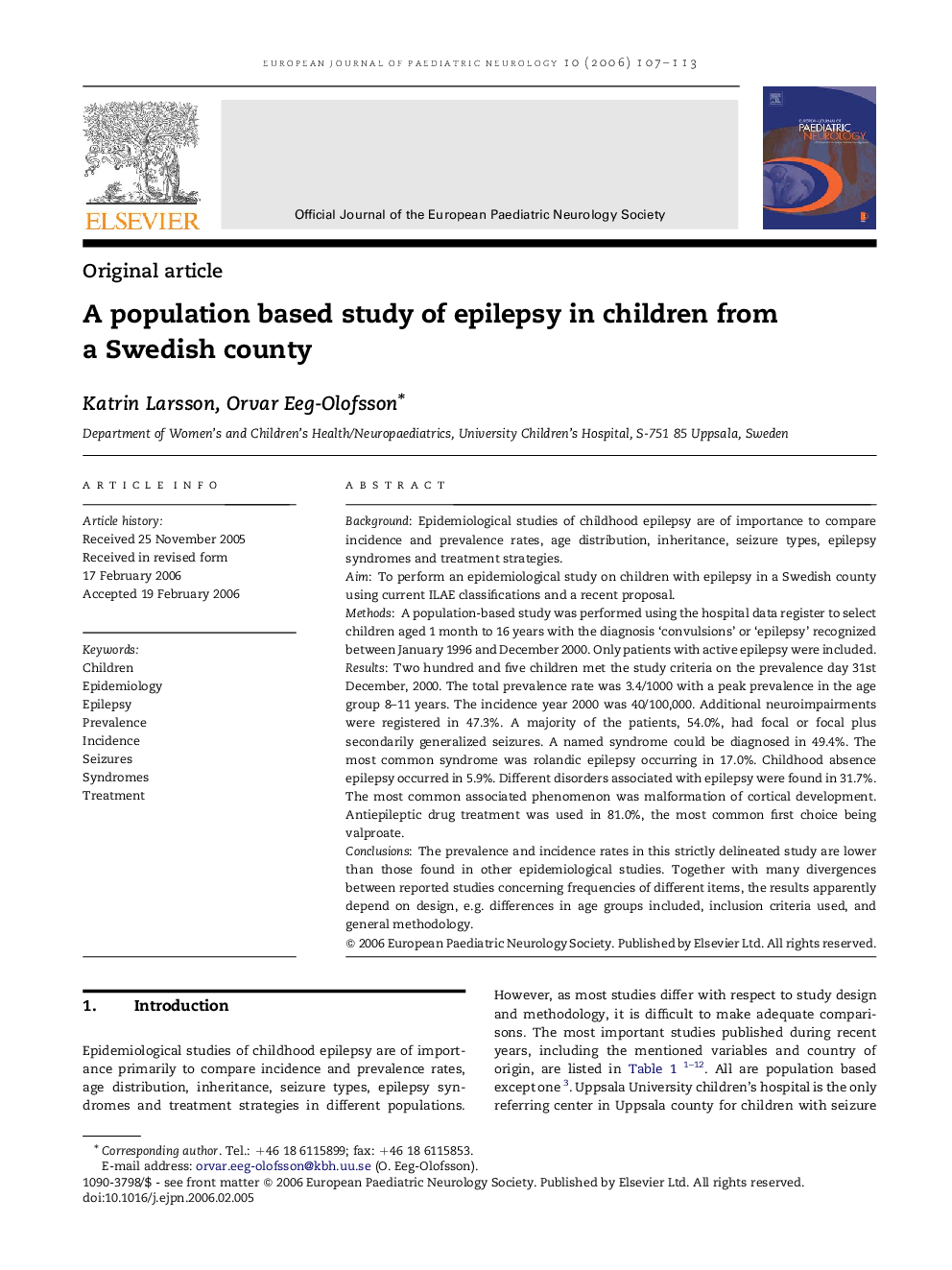| Article ID | Journal | Published Year | Pages | File Type |
|---|---|---|---|---|
| 3055068 | European Journal of Paediatric Neurology | 2006 | 7 Pages |
BackgroundEpidemiological studies of childhood epilepsy are of importance to compare incidence and prevalence rates, age distribution, inheritance, seizure types, epilepsy syndromes and treatment strategies.AimTo perform an epidemiological study on children with epilepsy in a Swedish county using current ILAE classifications and a recent proposal.MethodsA population-based study was performed using the hospital data register to select children aged 1 month to 16 years with the diagnosis ‘convulsions’ or ‘epilepsy’ recognized between January 1996 and December 2000. Only patients with active epilepsy were included.ResultsTwo hundred and five children met the study criteria on the prevalence day 31st December, 2000. The total prevalence rate was 3.4/1000 with a peak prevalence in the age group 8–11 years. The incidence year 2000 was 40/100,000. Additional neuroimpairments were registered in 47.3%. A majority of the patients, 54.0%, had focal or focal plus secondarily generalized seizures. A named syndrome could be diagnosed in 49.4%. The most common syndrome was rolandic epilepsy occurring in 17.0%. Childhood absence epilepsy occurred in 5.9%. Different disorders associated with epilepsy were found in 31.7%. The most common associated phenomenon was malformation of cortical development. Antiepileptic drug treatment was used in 81.0%, the most common first choice being valproate.ConclusionsThe prevalence and incidence rates in this strictly delineated study are lower than those found in other epidemiological studies. Together with many divergences between reported studies concerning frequencies of different items, the results apparently depend on design, e.g. differences in age groups included, inclusion criteria used, and general methodology.
